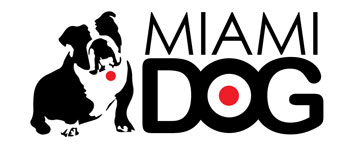
Just like their pet parents, some dogs may need a low-sodium diet. In fact, “Overall, dogs need proportionately less sodium than we do,” says Dr. Jon Nauss, medical director at the Irvine Valley Veterinary Hospital Primary Care & Integrative Medicine in California.
What is low-sodium dog food?
Many low-sodium dog foods are not specifically labeled as “low sodium.” Nathan Elam, Ph.D., a consulting nutritionist for Nutrition Service Associates and Inline Nutrition, consults on recipe formulations for numerous pet food companies and defines a low-sodium diet as “one that has less than 1% supplemental salt included on dry matter basis.”
These can include some limited-ingredient recipes, foods for dogs with sensitivities, heart-healthy dog foods or food that needs to be refrigerated to maintain freshness. Salt is often used as a preservative in canned food.
Nathan adds, “The most common supplemented salt ingredient in pet diets would be sodium chloride (NaCl) referred to as salt (table salt) or sea salt. However, other salt ingredients would include potassium chloride, magnesium chloride and to a lesser inclusion calcium chloride and copper chloride. And, because formulations typically contain 1% salt (or less) on a dry matter basis, rarely is the total salt content listed on a label as guaranteed inclusion.”
You can typically find low-sodium dog food as cardiac diets. Do research and discuss options with your veterinarian. Here are just a few low-sodium dog foods on the market:
Do all dog foods have sodium?
The sodium content in pet foods is recommended by The Association of American Feed Control Officials (AAFCO). Consequently, pet foods require a minimum amount of sodium to be considered a complete and balanced diet. It is also considered a preservative.
Benefits of salt in dog food:
- Salt maintains the body’s fluids (blood).
- Sodium ions are needed for muscle contraction and electrical impulses.
- Salt prevents conditions such as gout.
- Salt helps maintain normal blood pressure to the heart and kidneys.
“Sodium is the most abundant positive ion electrolyte in the extracellular fluid in the body. So, it is found in all parts of the body helping with regulating fluid volume, and the proper functioning of nerves, muscles and many other bodily operations,” explains Dr. Nauss.
“Sometimes, however, a patient may have too much sodium, either from an imbalance of operations in the body or overconsumption in the diet. Screening blood work, conducted by your veterinarian, can help detect these imbalances and help determine the best plan for correction,” he adds.
Common health conditions that may require a low-sodium diet for dogs include:
- Heart disease
- Hypertension
- Kidney disease
- Ascites (fluid retention in the abdomen)
High-sodium human snacks for dogs
Even if you are serving your dog a low-sodium diet approved by your vet, Dr. Nauss warns that pet parents inadvertently add additional salt to their dogs’ diets by giving them human snacks, such as popcorn, French fries, lunch meats and cheese which, he adds, “represent a potentially considerable amount of sodium for a dog. Rather consider lower sodium snacks like blueberries or apples.”
Pet food manufacturer Holly Sher, owner of Evanger’s Dog and Cat Food and Against the Grain pet food, advises that if a dog needs a super low-sodium diet, avoid recipes with a saltwater fish base as they are typically higher in sodium.
Before switching your dog to a low-sodium diet, consult your veterinarian to find a food that will keep your dog excited for meal time.
